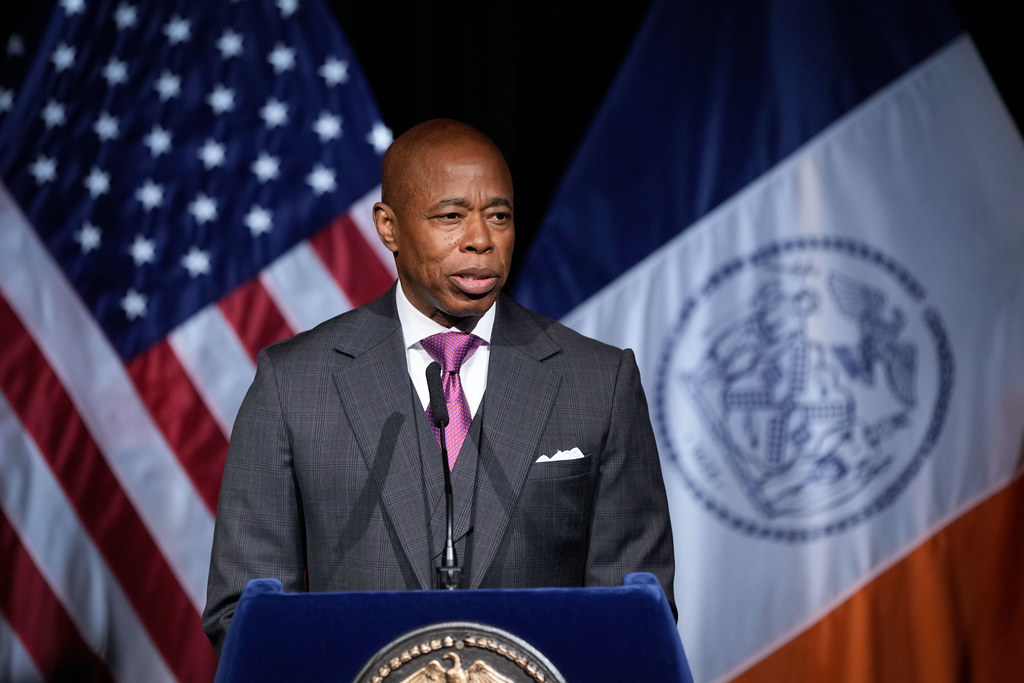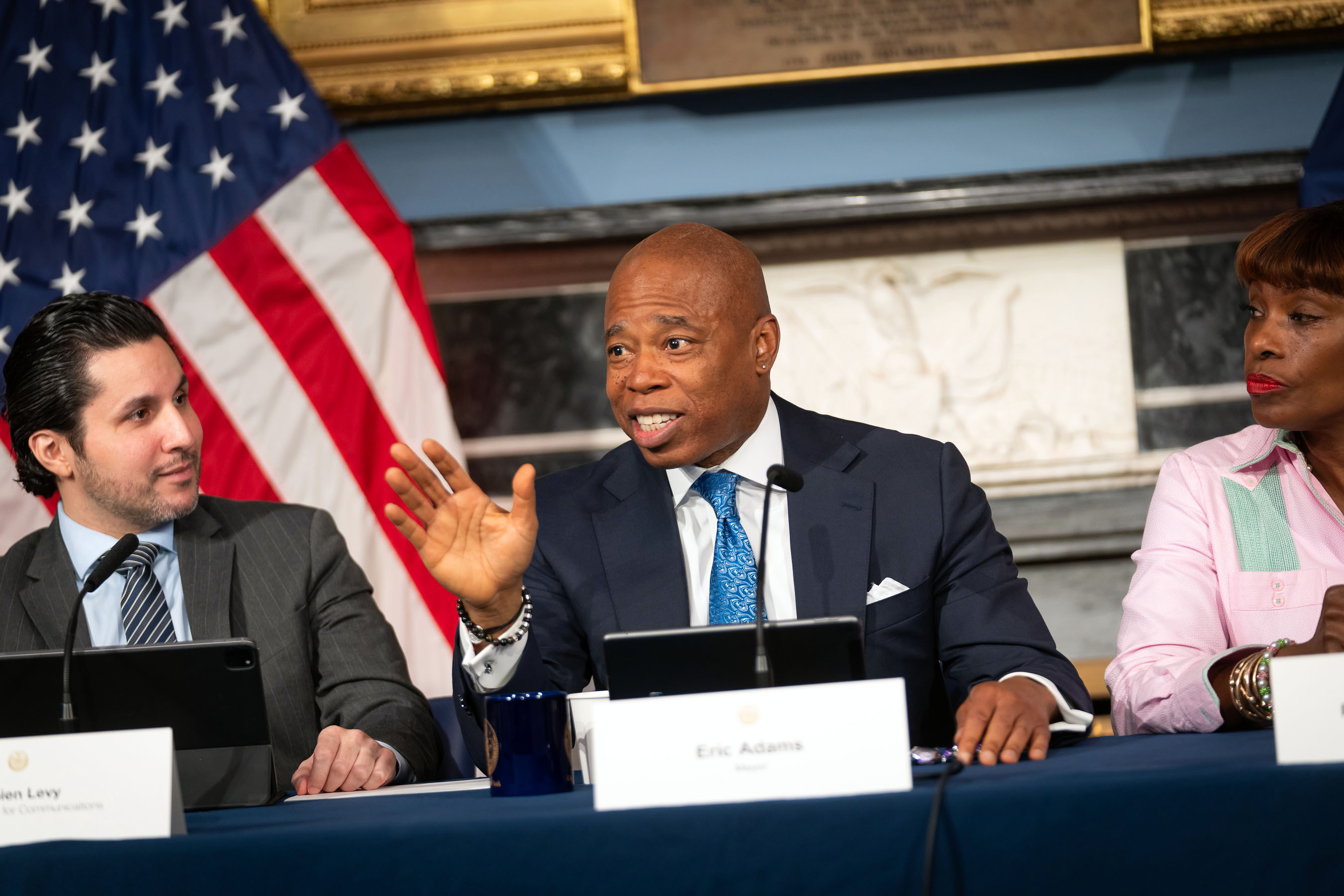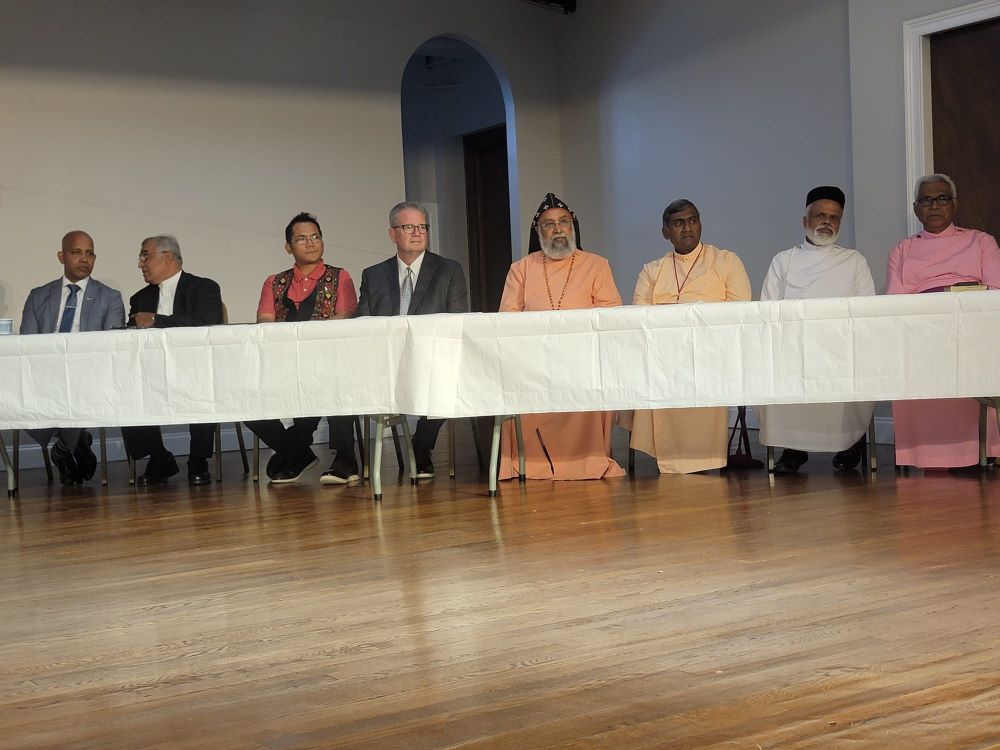Most Significant Pro-Housing Reform Ever to City Zoning, “City of Yes for Housing Opportunity” Would Create an Additional 100,000 Homes for 250,000+ New Yorkers
Our Bureau
New York, NY
New York City Mayor Eric Adams has launched an urgent, groundbreaking effort to tackle the city’s persistent and severe housing shortage and enduring affordability crisis by enabling the creation of “a little more housing in every neighborhood” — making New York a city that working people can once again afford to live in. As the lack of available homes drives up rents and pushes more New Yorkers into the shelter system, Mayor Adams’ “City of Yes for Housing Opportunity” proposal would help the New Yorkers who have built this city afford to stay here and raise their families here by creating an additional 100,000 homes — enough to support more than 250,000 New Yorkers, roughly the entire population of Buffalo, N.Y. — over 15 years and more than 250,000 family-sustaining jobs.
The steps Mayor Adams is proposing would be the most significant pro-housing reforms ever to the city’s zoning code and a critical step towards Mayor Adams’ “moonshot” goal of delivering 500,000 new homes to New Yorkers over the next decade.
This new initiative represents the third of three citywide zoning changes that will be presented to all five borough presidents, all 59 community boards, and the New York City Council as part of Mayor Adams’ vision for New York City as an inclusive, equitable “City of Yes.” As the majority of New Yorkers spend more than one-third of their income on rent, and fewer than 1 percent of apartments listed under $1,500 monthly rent are available for new tenants, the City of Yes for Housing Opportunity marks the first time a mayoral administration has proposed unlocking more housing on a citywide basis — offering a roadmap for every community to do its part to address this citywide crisis. The plan includes measures to eliminate mandates that parking spaces be constructed with new homes, create additional affordable and supportive housing, eliminate bans on apartments across the city, and enable conversions of empty office buildings into homes for New Yorkers.
“So many of the challenges we face as a city are rooted in an ongoing housing shortage that is forcing too many people to leave New York City and making life increasingly difficult for those who stay. For more than 60 years, we have added layers upon layers of regulations, effectively outlawing the kinds of housing that our city has long relied on. Today, we are proposing the most pro-housing changes in the history of New York City’s modern zoning code — changes that will remove longstanding barriers to opportunity, finally end exclusionary zoning, cut red tape, and transform our city from the ground up,” said Mayor Adams. “This plan will spur an additional 100,000 new homes for a quarter-million New Yorkers. If we do this right, decades from now, New Yorkers will see this moment for what it was: a turning point away from exclusionary policies and outdated ideas and towards a brighter, bolder, more equitable future — the moment when we came together and decided to be a ‘City of Yes.’”
“Our housing crisis is severe, and this landmark proposal meets the moment with the most sweeping pro-housing changes in the history of our zoning code,” said Deputy Mayor for Housing, Economic Development, and Workforce Maria Torres-Springer. “At its root, this plan is driven by a simple insight: To solve our housing shortage, we need to build more homes. Building is essential to our future as a city where working families can live and thrive and to our status as an economic and cultural capital. Recognizing that the time for tinkering is over, Mayor Adams has put forth a visionary and courageous plan to dismantle exclusionary zoning, make New York City more affordable, and tackle this crisis head-on.”
“Our goal is to create ‘a little more housing in every neighborhood’ to finally tackle New York’s housing shortage head-on,” said New York City Department of City Planning (DCP) Director Dan Garodnick. “By addressing the root cause of New York’s high housing costs, displacement, homelessness, and the imbalance of power between tenants and landlords, we can build a city where working families can thrive. These critical and urgently needed changes will not just create the housing that New Yorkers need — they’ll also help foster vibrant communities where New Yorkers have easy access to transit and services, support multigenerational families, and deliver good-paying jobs and a greener city.”
“With NYCHA residents accounting for one in every 17 New Yorkers, we know that the creation of housing in our city is of critical importance,” said New York City Housing Authority (NYCHA) CEO Lisa Bova-Hiatt. “The ‘City of Yes for Housing Opportunity’ proposal will help create an abundance of housing for New Yorkers for years to come, with an emphasis on bringing permanently affordable homes to neighborhoods across the five boroughs.”
These steps also build on the Adams administration’s record-breaking efforts in Fiscal Year 2023, producing the most new supportive homes and homes for New Yorkers formerly experiencing homelessness ever in the city, creating the second-most new affordable homes in one year, and connecting more New Yorkers to permanent homes with City Fighting Homelessness and Eviction Prevention Supplement (FHEPS) housing vouchers than ever in the program’s history.
The City of Yes for Housing Opportunity plan could add 100,000 homes to expected housing production over the next 15 years, create nearly 260,000 temporary jobs and an additional 6,300 permanent jobs, and provide $58.2 billion in economic impact to the city over the next 30 years. The policies have been developed over the past year in close consultation with community partners, other stakeholders involved in creating housing, and local and national experts to draw on evidence-based best practices to make housing more affordable, ease displacement pressures, and reverse segregation by race and income reinforced by centuries of housing policy.
Around the world, cities have lowered housing costs by allowing modest apartments where residents share some common facilities, like kitchens and bathrooms. New York was once full of options like these — but, over time, regulations have made this kind of housing all but impossible to offer. This proposal would adjust current rules that mandate larger unit sizes, allow more smaller-sized apartments to reduce the need for single adults to live with roommates, and re-legalize homes with shared kitchen or bathroom facilities while maintaining strong building code and livability standards.
Next week, DCP will release a draft scope of work for the City of Yes for Housing Opportunity and early documentation in the environmental review process, as well as host a virtual public information session where the public can learn more and ask questions about the proposal. The draft scope of work will be followed by a scoping meeting, where the public can weigh in on the environmental review.


























